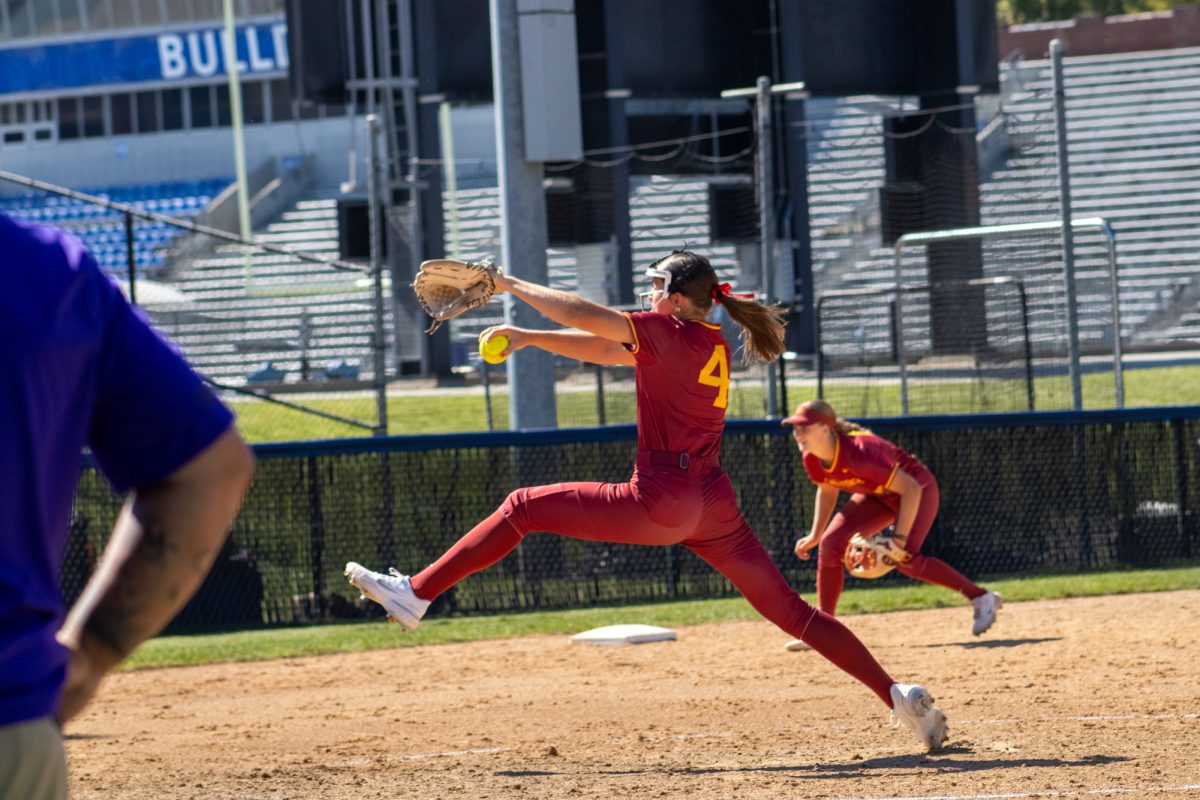Remote sensing may assist corn producers
June 18, 2003
A group of ISU researchers will take to the skies this summer in airplanes and with satellites to test the effectiveness of predicting corn pollination patterns.
Mark Westgate, associate professor of agronomy, said he has been working on this project for two years now. The purpose of this study is to identify the timing of corn tassel emergence by using remote sensing, he said.
“It is important to know when tassels emerge in order to know when pollen is ready to shed and move across the landscape,” said Jerry Hatfield, professor and collaborator of soil tilth. “This will help us understand pollen release for corn, but has application for a range of crops.”
Hatfield said he is on Westgate’s research team and has been studying remote sensing since 1973.
Remote sensing is a process in which the sun’s reflection off of the corn plants displays the color of the tassels, said John Basart, collaborating professor of aerospace engineering and engineering mechanics.
The images gathered are measurements of color change in the corn tassels, Basart said. Several tests are being performed with different plants to determine if the plants can predict the maturity of the tassels by the way their colors change, he said.
By monitoring the changes in color, they can predict when the tassels will shed their pollen, Basart said. The corn sheds its pollen, it hits the silk and fertilizes the plant to make ears. If there are strong winds, the pollen can be carried to nearby fields and corn plants could be genetically modified due to a cross of hybrids.
“Those who are producing genetically modified-free corn, those that contract with a company to produce a plant-made-chemical and those that produce hybrid seed all are concerned about the genetic purity of their harvested seed,” Westgate said. “This remote-sensing approach for knowing the timing of pollen production in neighboring fields will help growers to determine the risk of producing seeds that are less genetically pure than desired.”
When the research began, Westgate said he was simply trying to see if his instruments could see the tassels — and indeed they could.
In the beginning, Westgate used a cherry picker to get above the canopy of the corn plants, Basart said.
Last year’s cherry picker project proved that the instruments worked from a low elevation, Basart said.
“This year we are asking, ‘Can we still see them when we get farther away from the canopy?,'” Westgate said. “We will make measurements from airplanes up to 3,000 feet above the canopy. If the results look promising, we’ll continue to make measurements at greater distances and under a wider range of conditions.”
This year the team plans to compare airplane data with satellite spectra already available, Westgate said. After this year he plans to be testing the possible usage of new satellite images.
If this study is successful in the years to come, Westgate said he plans to work with NASA and their satellites to further the research.
“We will pursue collaboration with researchers at NASA’s earth monitoring laboratories to use their satellites for routine monitoring of corn fields during the pollination period,” Westgate said. “Then we will determine how best to make this information available to interested corn producers.”
Westgate’s research is being funded by a grant from the Iowa Space Grant Consortium, Basart said.






